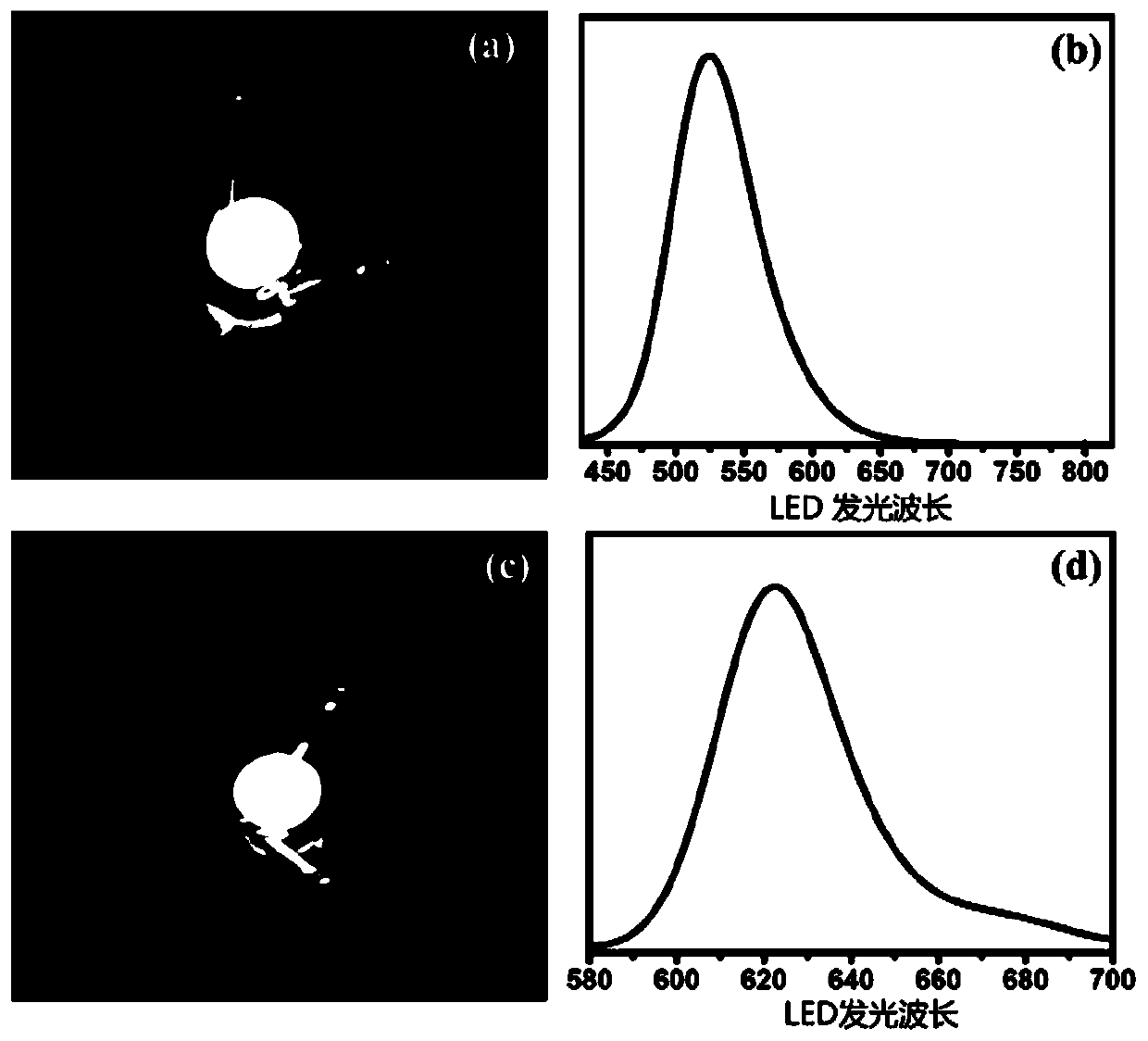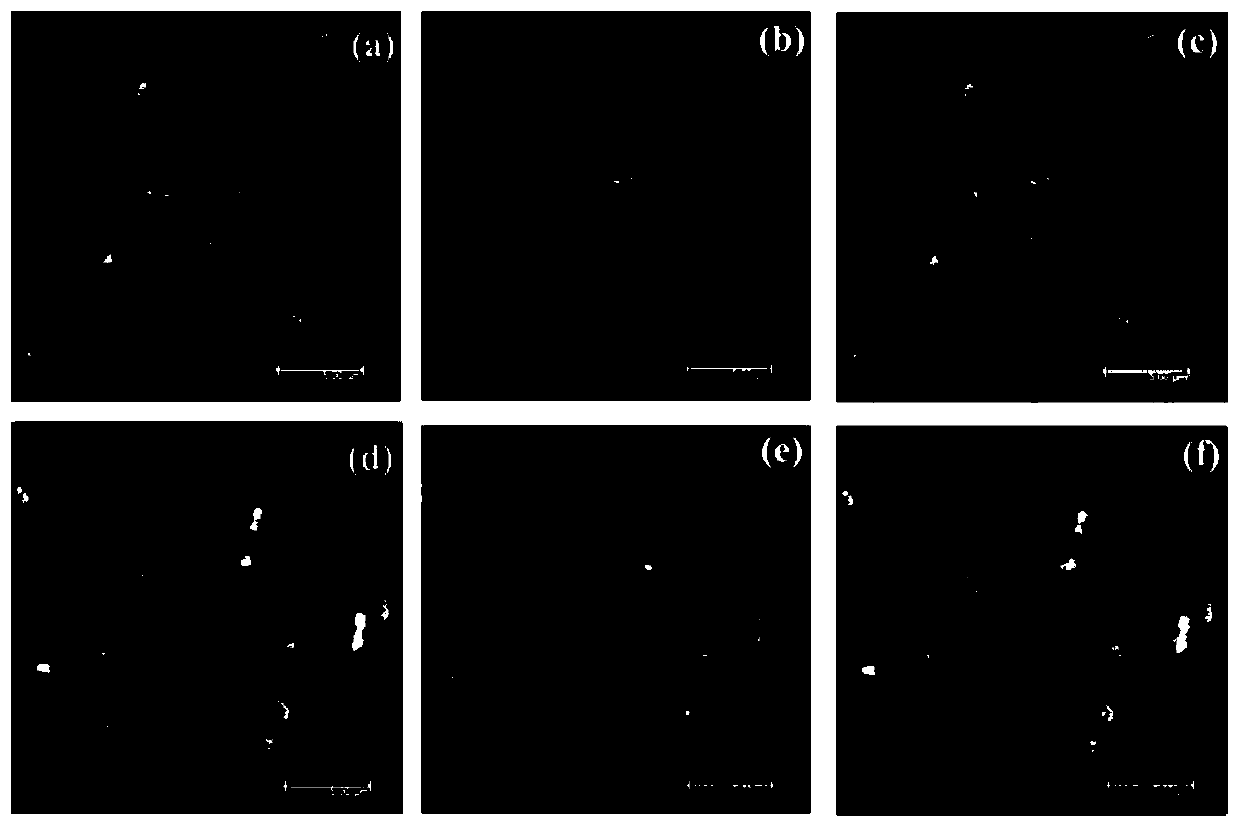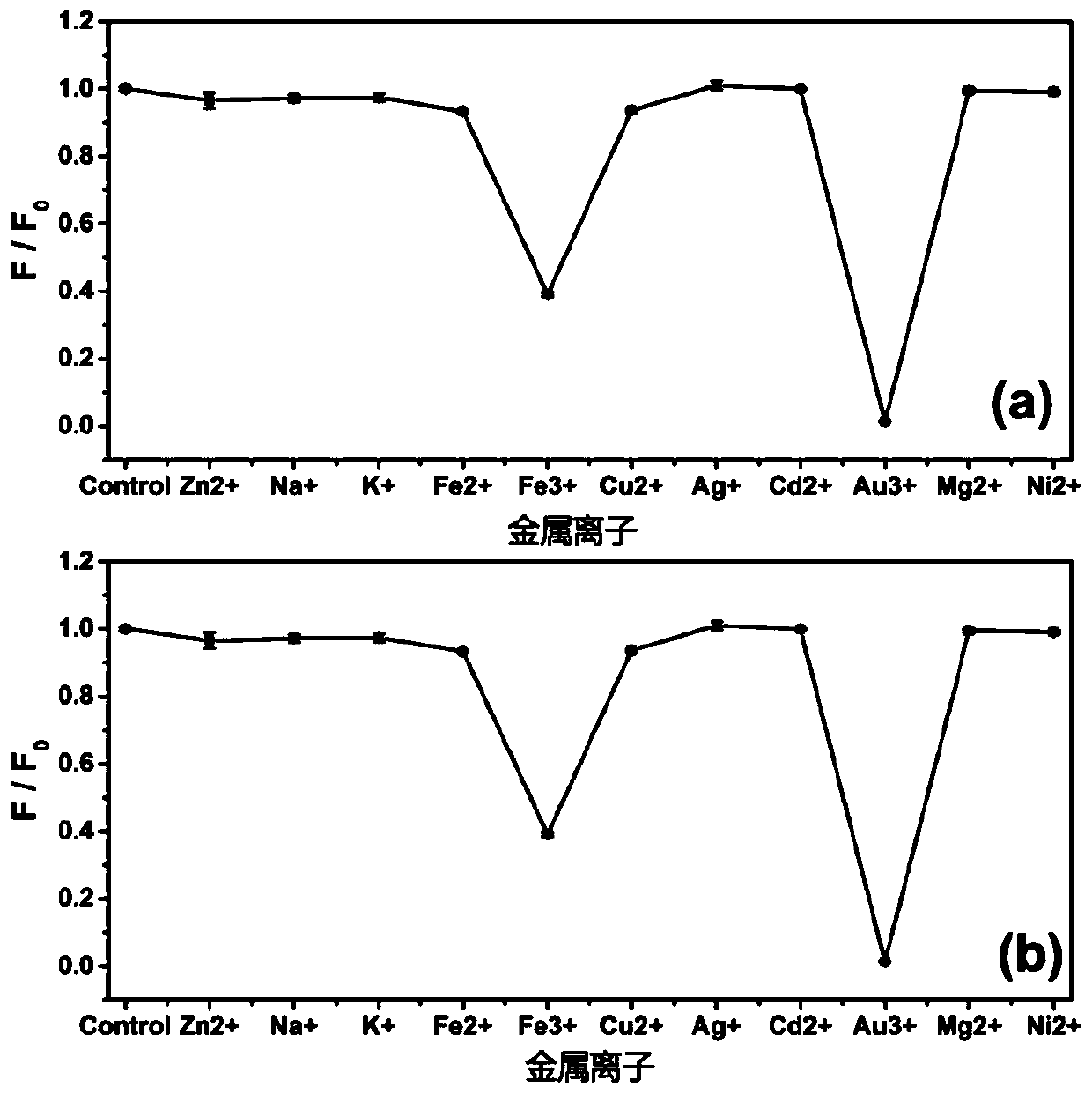Method for preparing two-waveband single-photon and two-photon fluorescent carbon quantum dots and application
A two-photon fluorescence, carbon quantum dot technology, applied in chemical instruments and methods, fluorescence/phosphorescence, nano-optics, etc., can solve the problems of carbon quantum dots hindering practical application, photodamage, photobleaching, etc., and achieve good selective fluorescence. Quenching, easy handling, good stability effect
- Summary
- Abstract
- Description
- Claims
- Application Information
AI Technical Summary
Problems solved by technology
Method used
Image
Examples
Embodiment 1
[0036] This embodiment provides a method and application for preparing two-band single-photon and two-photon fluorescent carbon quantum dots based on o-phenylenediamine, which is applied to LED light emission, as follows.
[0037] Take two 100mL beakers and wash them in ultrapure water for 30 minutes. After cleaning, dry them for later use.
[0038] Use a 5mL pipette gun to absorb 15mL of ultrapure water and add it to one of the beakers. Use an electronic balance to weigh 200 mg of o-phenylenediamine and add it to the beaker. After ultrasonication for 30 minutes, a clear and transparent solution is obtained.
[0039] Then use a 5mL pipette gun to draw the obtained transparent solution, add it into a Teflon reactor with a capacity of 50mL, and heat it at a temperature of 220°C, and heat it at a constant temperature for 6 hours. min -1 Centrifuge for 10 min.
[0040] Then absorb the supernatant after centrifugation, put it into a dialysis bag with a molecular weight cut off of...
Embodiment 2
[0045] This embodiment provides a method and application for preparing two-band single-photon and two-photon fluorescent carbon quantum dots based on o-phenylenediamine, and the application is for two-photon fluorescent labeling of Escherichia coli under the condition of pH=1, as follows.
[0046] Take two 100mL beakers, wash them in ultrapure water for 30 minutes, and dry them for later use.
[0047] Use a 5mL pipette gun to draw 15mL of ultrapure water into one of the beakers, weigh 100mg of o-phenylenediamine with an electronic balance, add it to the beaker and ultrasonically dissolve it for 30 minutes, and obtain a clear and transparent o-phenylenediamine solution, add it to the o-phenylenediamine solution 0.5mL of phosphoric acid was prepared into a mixed solution of o-phenylenediamine.
[0048] Use a 5mL pipette gun to draw 15mL o-phenylenediamine mixed solution and add it into a Teflon polytetrafluoroethylene reactor with a capacity of 50mL and heat it at a temperature ...
Embodiment 3
[0054] This embodiment provides a method and application for preparing two-band single-photon and two-photon fluorescent carbon quantum dots based on o-phenylenediamine, which is applied to the metal ion Fe under the condition of pH=0. 3+ and Au 3+ Selective fluorescence quenching, as follows.
[0055] Take two 100mL beakers and wash them in ultrapure water for 30 minutes. After cleaning, dry them for later use.
[0056] Use a 5mL pipette gun to draw 15mL of ultrapure water into one of the beakers, weigh 150mg of o-phenylenediamine with an electronic balance, add it to the beaker and ultrasonically dissolve it for 30min, and obtain a clear and transparent solution.
[0057] Add 1.35 g of sodium sulfate to the solution to prepare a mixed solution of o-phenylenediamine. Use a 5mL pipette gun to draw the above solution into a Teflon polytetrafluoroethylene reactor with a capacity of 50mL and heat at a heating temperature of 180°C for 4 hours at a constant temperature. After th...
PUM
| Property | Measurement | Unit |
|---|---|---|
| size | aaaaa | aaaaa |
| lattice spacing | aaaaa | aaaaa |
| size | aaaaa | aaaaa |
Abstract
Description
Claims
Application Information
 Login to View More
Login to View More - R&D
- Intellectual Property
- Life Sciences
- Materials
- Tech Scout
- Unparalleled Data Quality
- Higher Quality Content
- 60% Fewer Hallucinations
Browse by: Latest US Patents, China's latest patents, Technical Efficacy Thesaurus, Application Domain, Technology Topic, Popular Technical Reports.
© 2025 PatSnap. All rights reserved.Legal|Privacy policy|Modern Slavery Act Transparency Statement|Sitemap|About US| Contact US: help@patsnap.com



